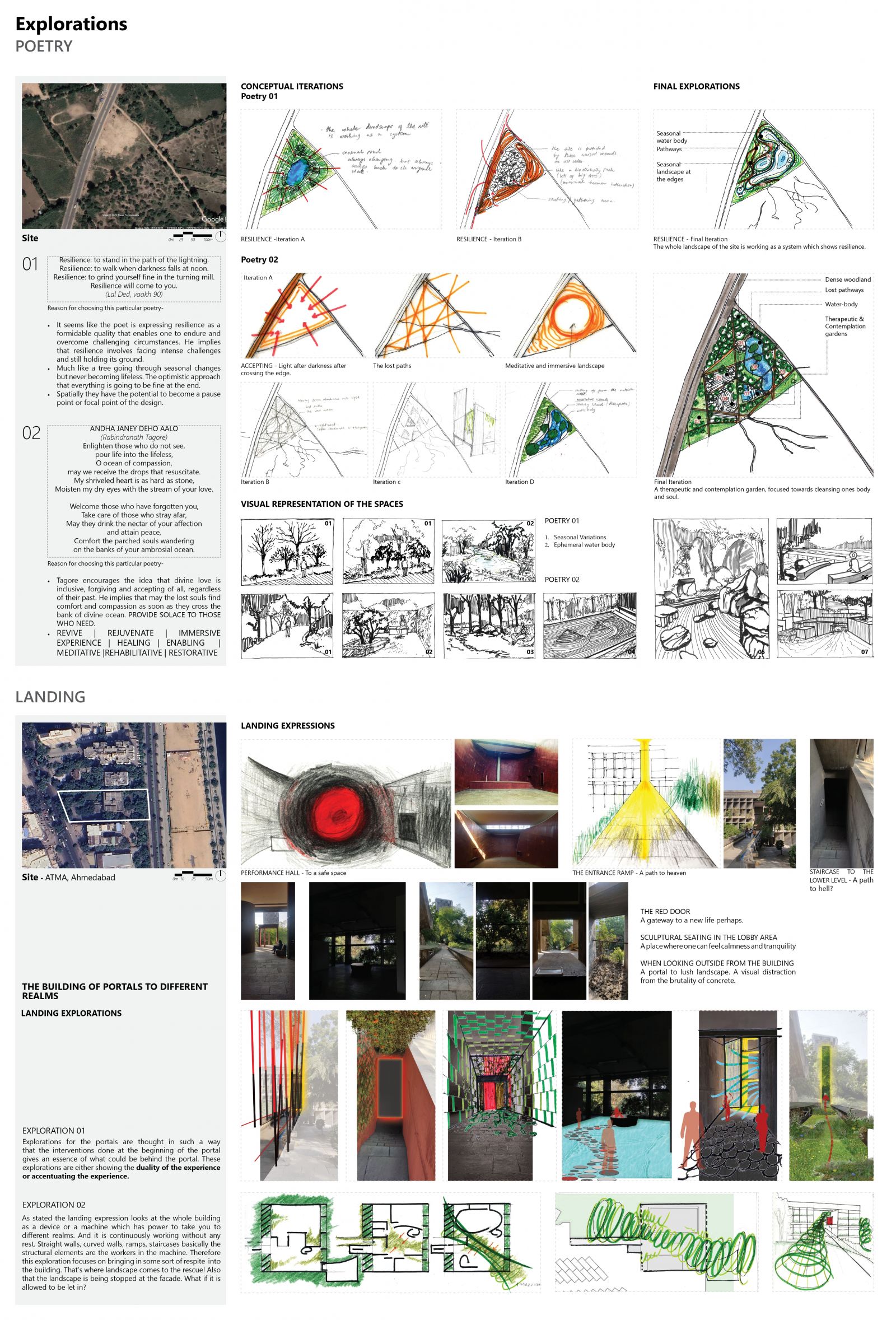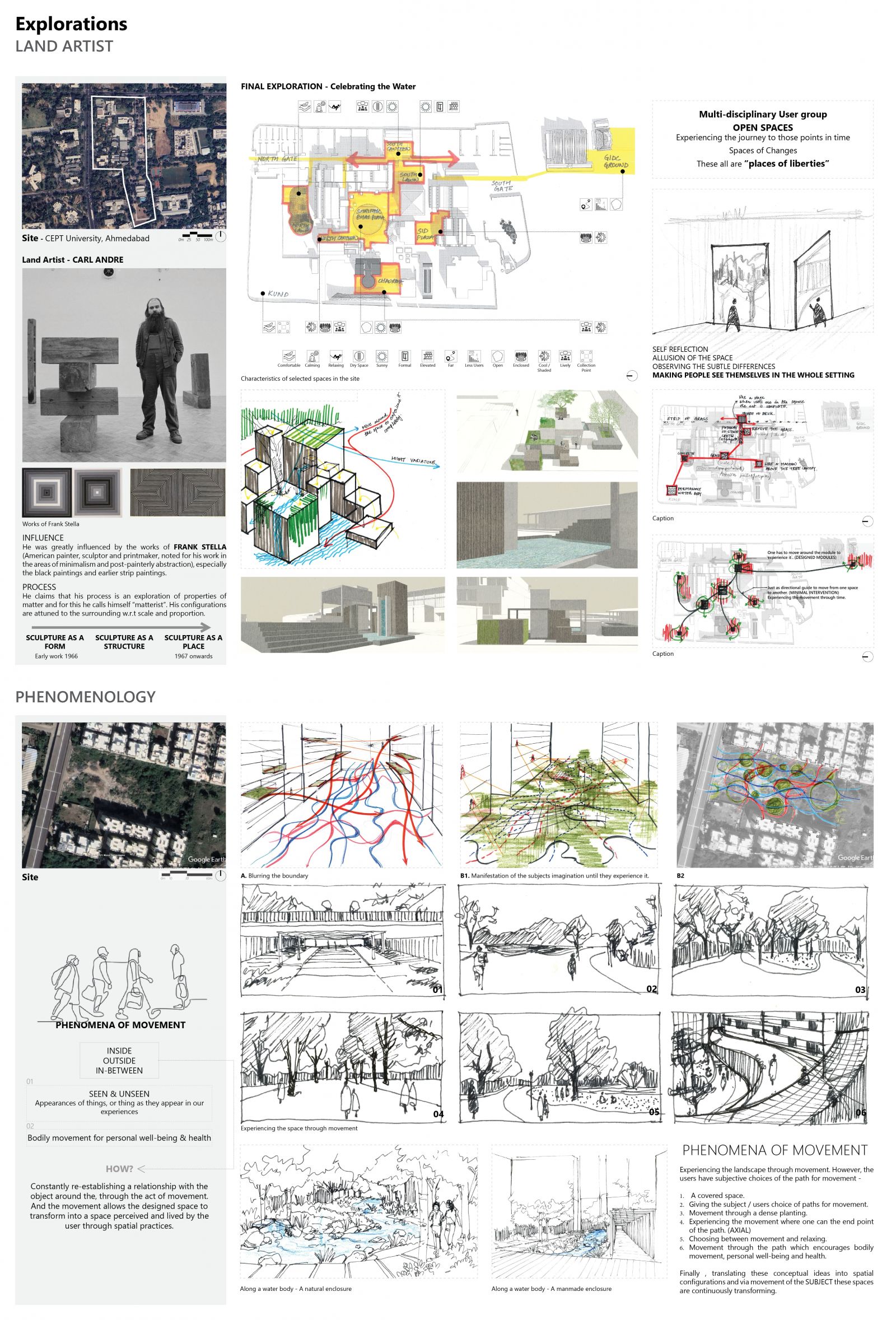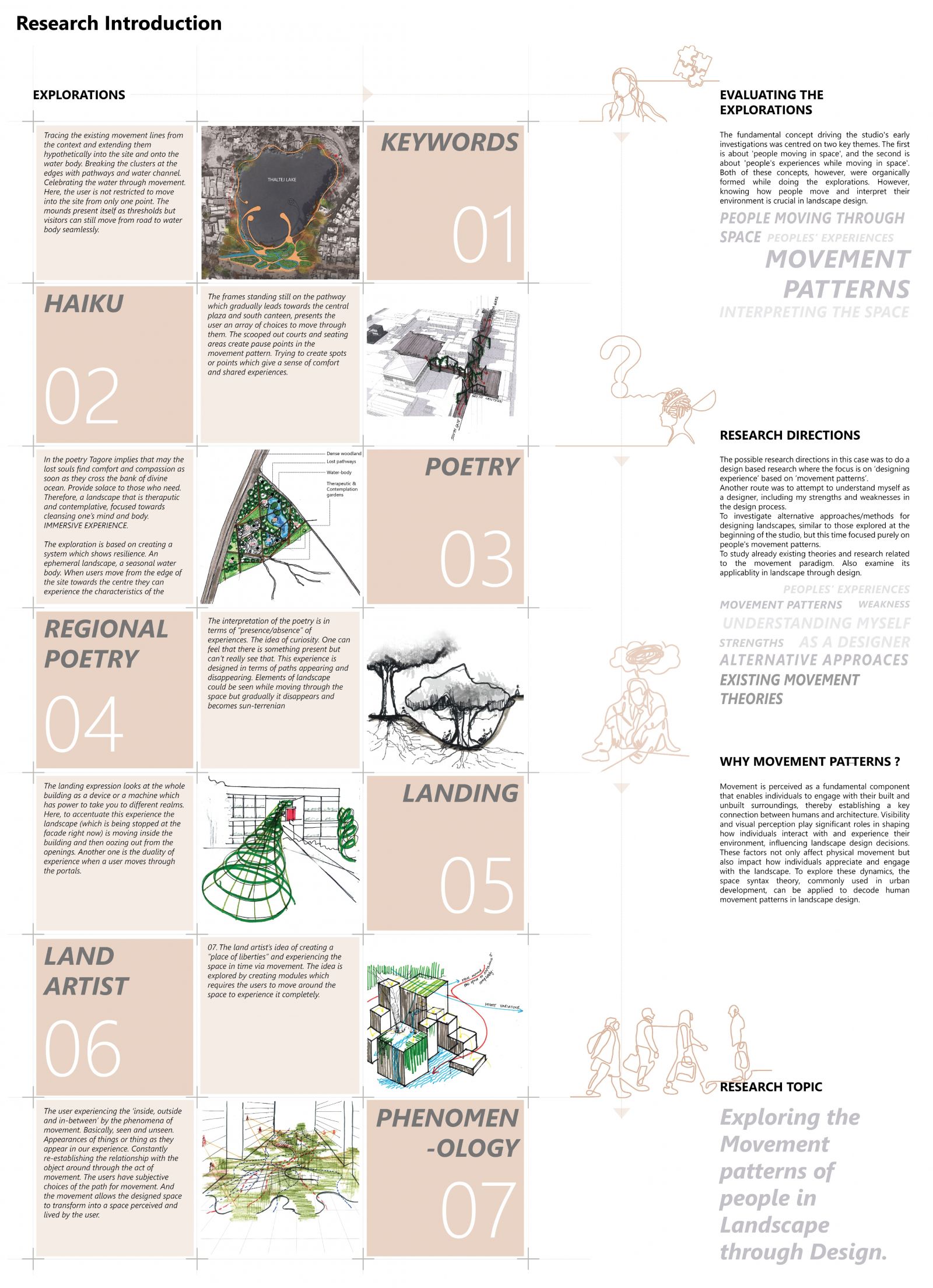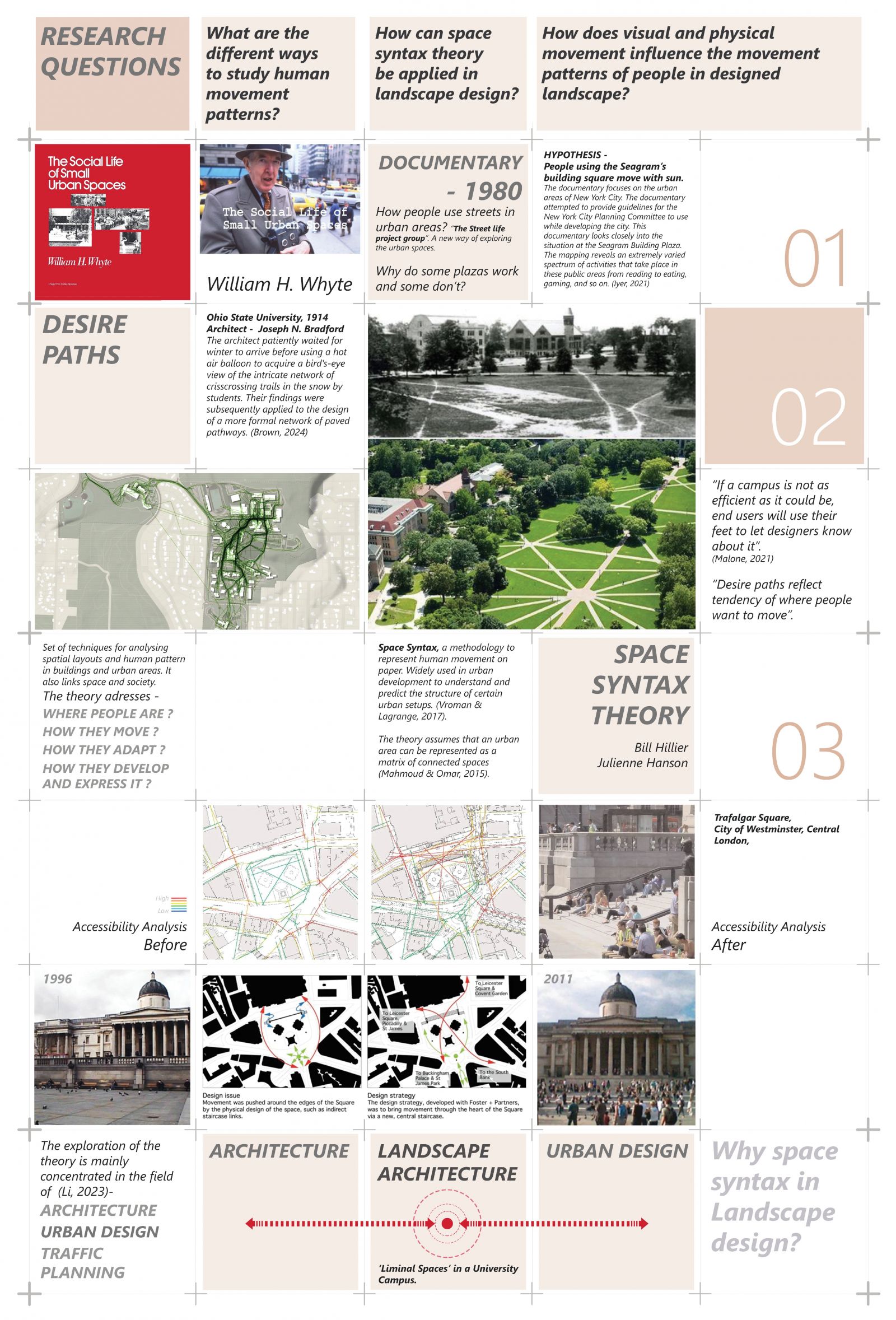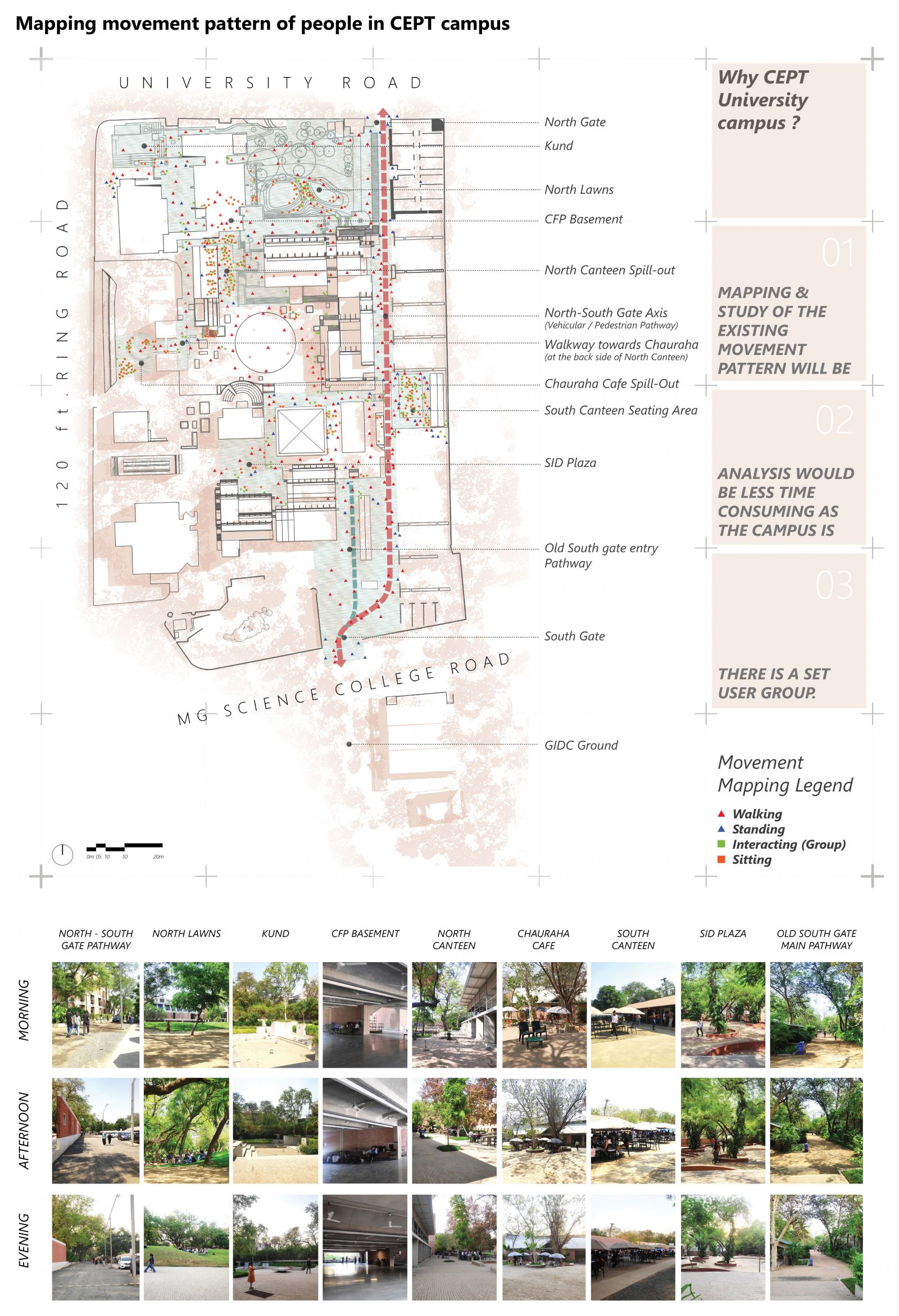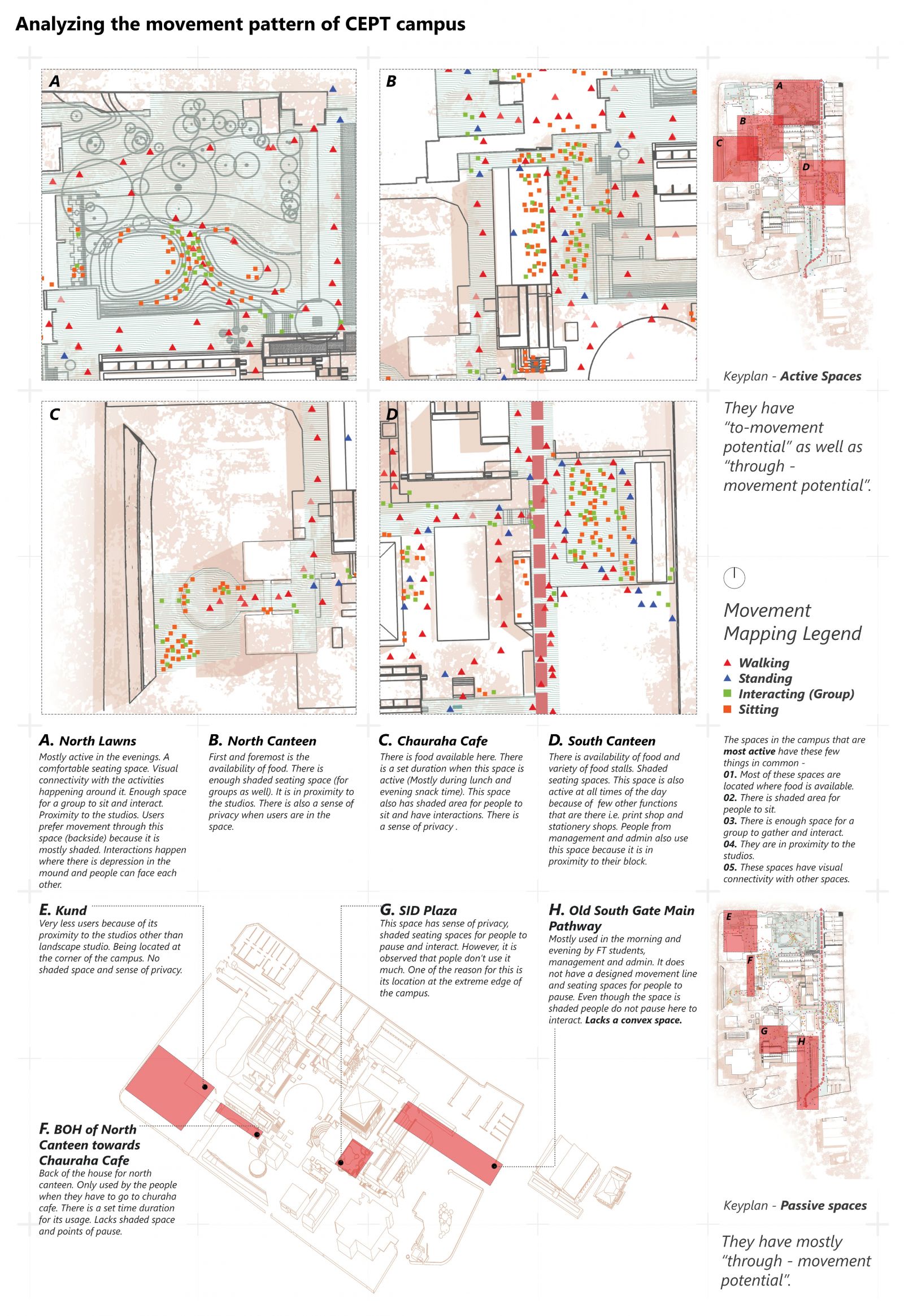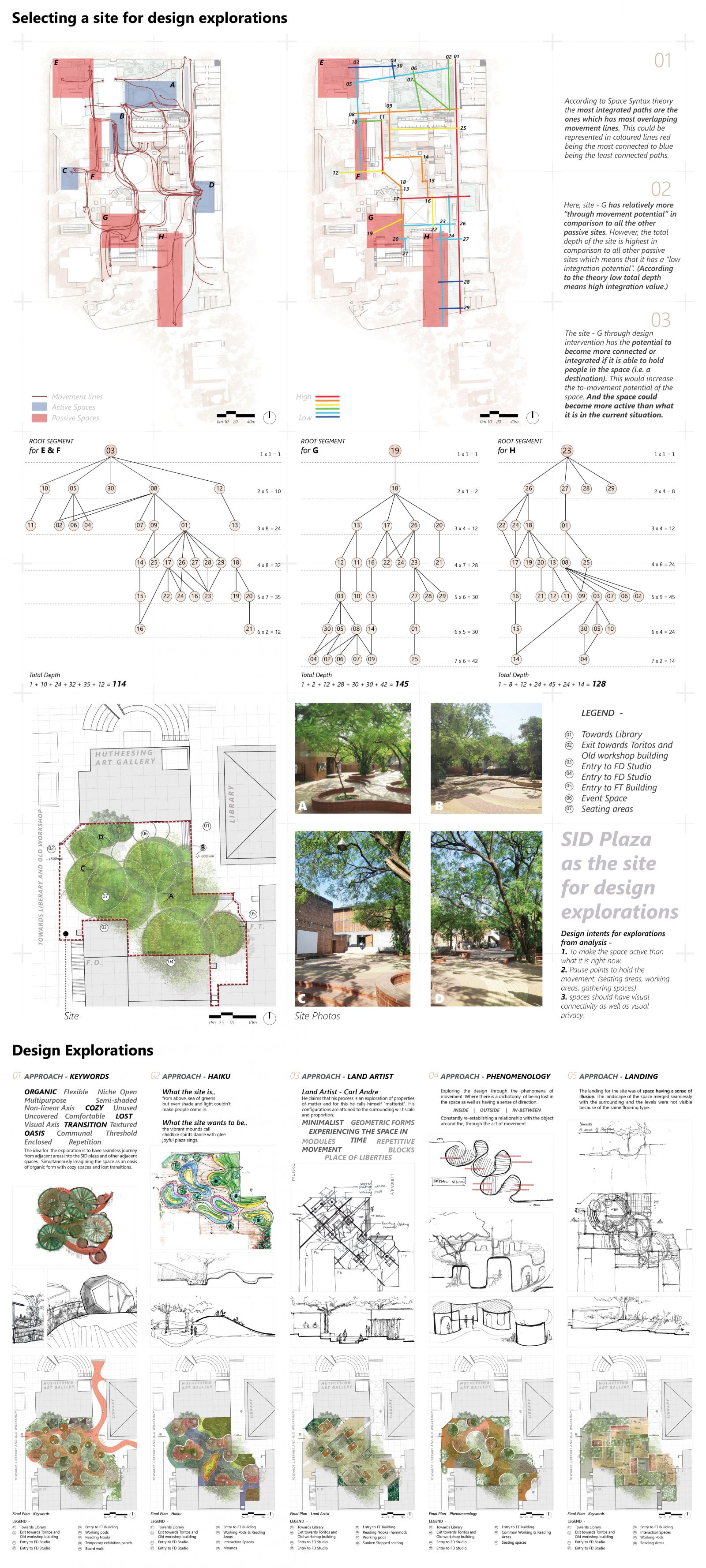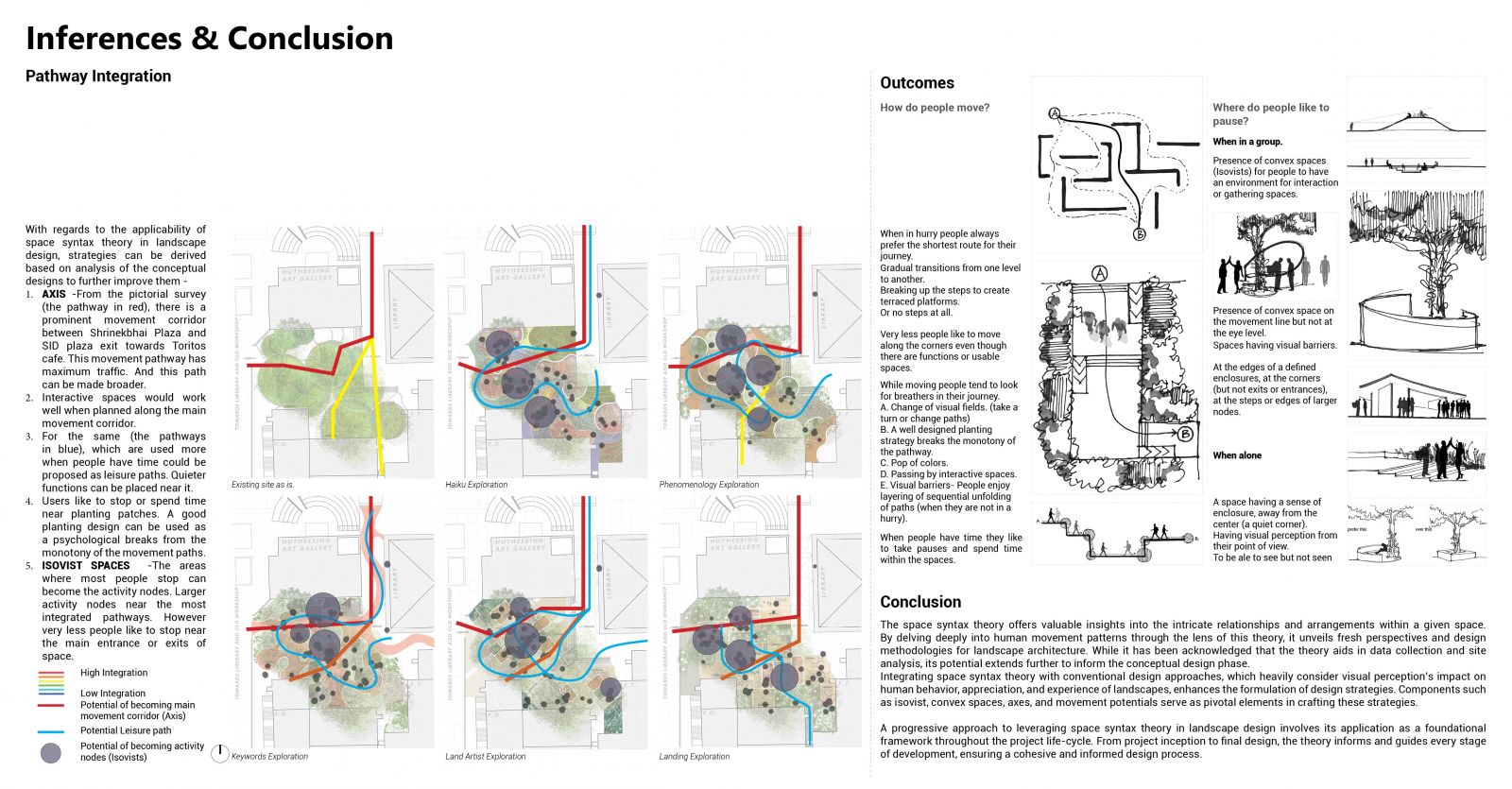Your browser is out-of-date!
For a richer surfing experience on our website, please update your browser. Update my browser now!
For a richer surfing experience on our website, please update your browser. Update my browser now!
Exploring movement patterns of people in Landscape through Design
Understanding how people move and perceive landscapes is crucial in landscape design. However, research in landscape design often overlooks the intricate dynamics of human movement within designed spaces. While the physical layout of landscapes is carefully planned, how individuals navigate and perceive these spaces is not always fully considered. Understanding human movement patterns and their influence on landscape experiences is essential for creating functional and enjoyable environments for users. This design-based research aims to fill this gap by exploring the application of space syntax theory in landscape design, focusing on deciphering human movement patterns and their implications for design decisions.
To begin with, the fundamental concept driving the studio’s early investigations was centered on two key themes. The first is about ‘people moving in space’, and the second is about ‘people’s experiences while moving in space’. Both of these concepts, however, were organically formed while doing the explorations. To explore these dynamics further, the space syntax theory, commonly used in urban development, can be applied to decode human movement patterns in landscape design. Previous studies have demonstrated its utility in analyzing movement patterns and spatial interactions in various contexts, including architecture, urban design, and traffic planning. While primarily applied in urban contexts, this theory can also inform landscape design practices.


